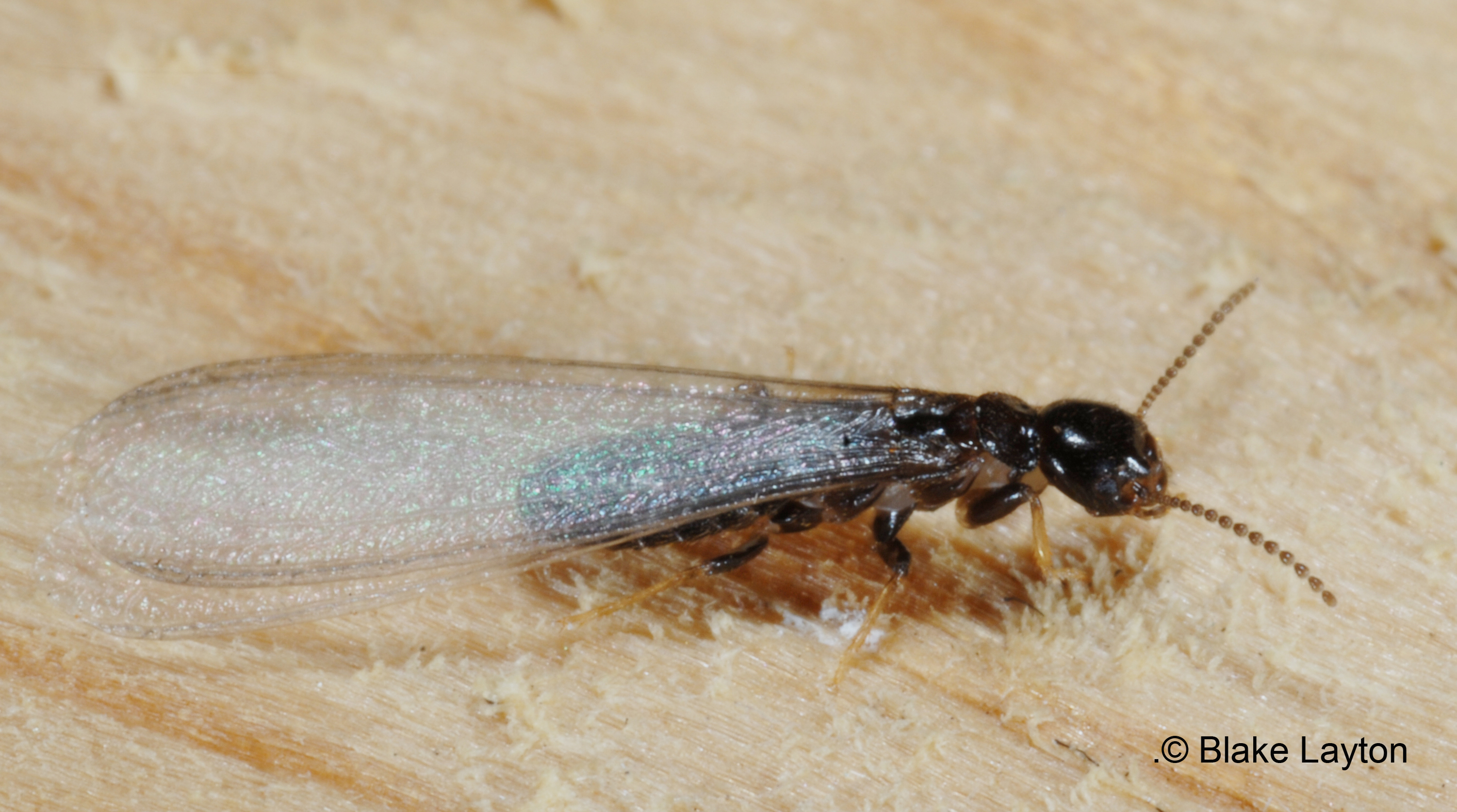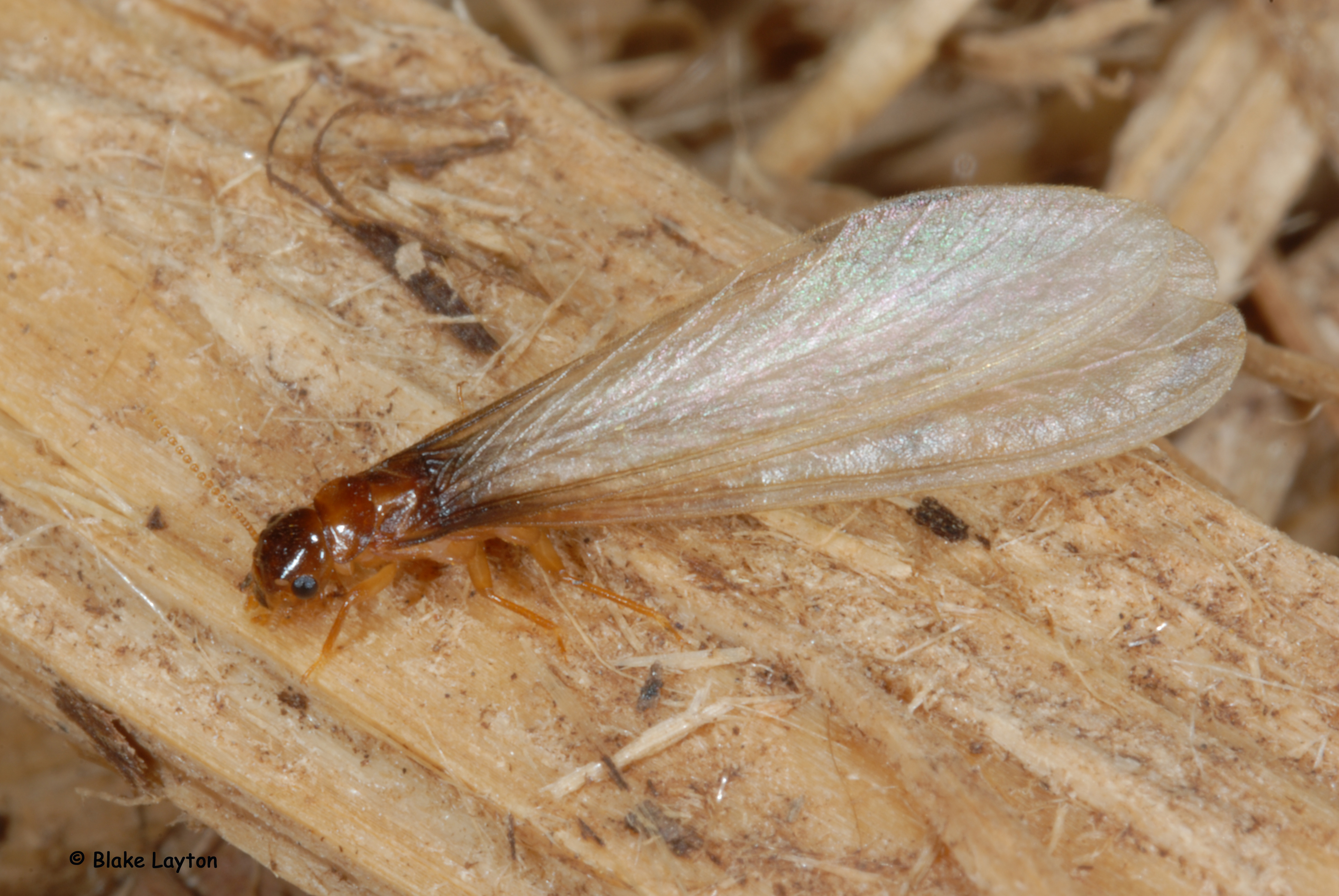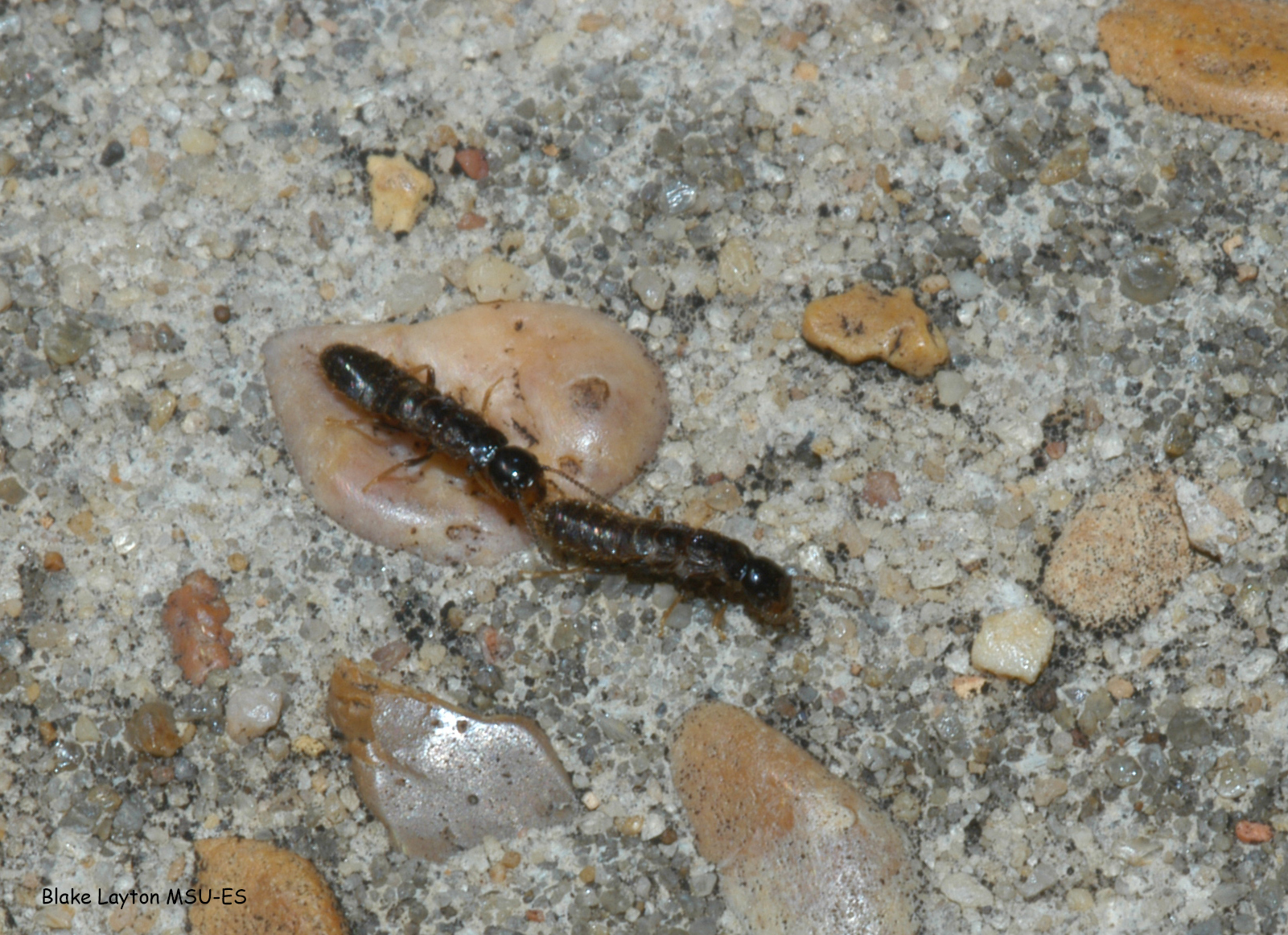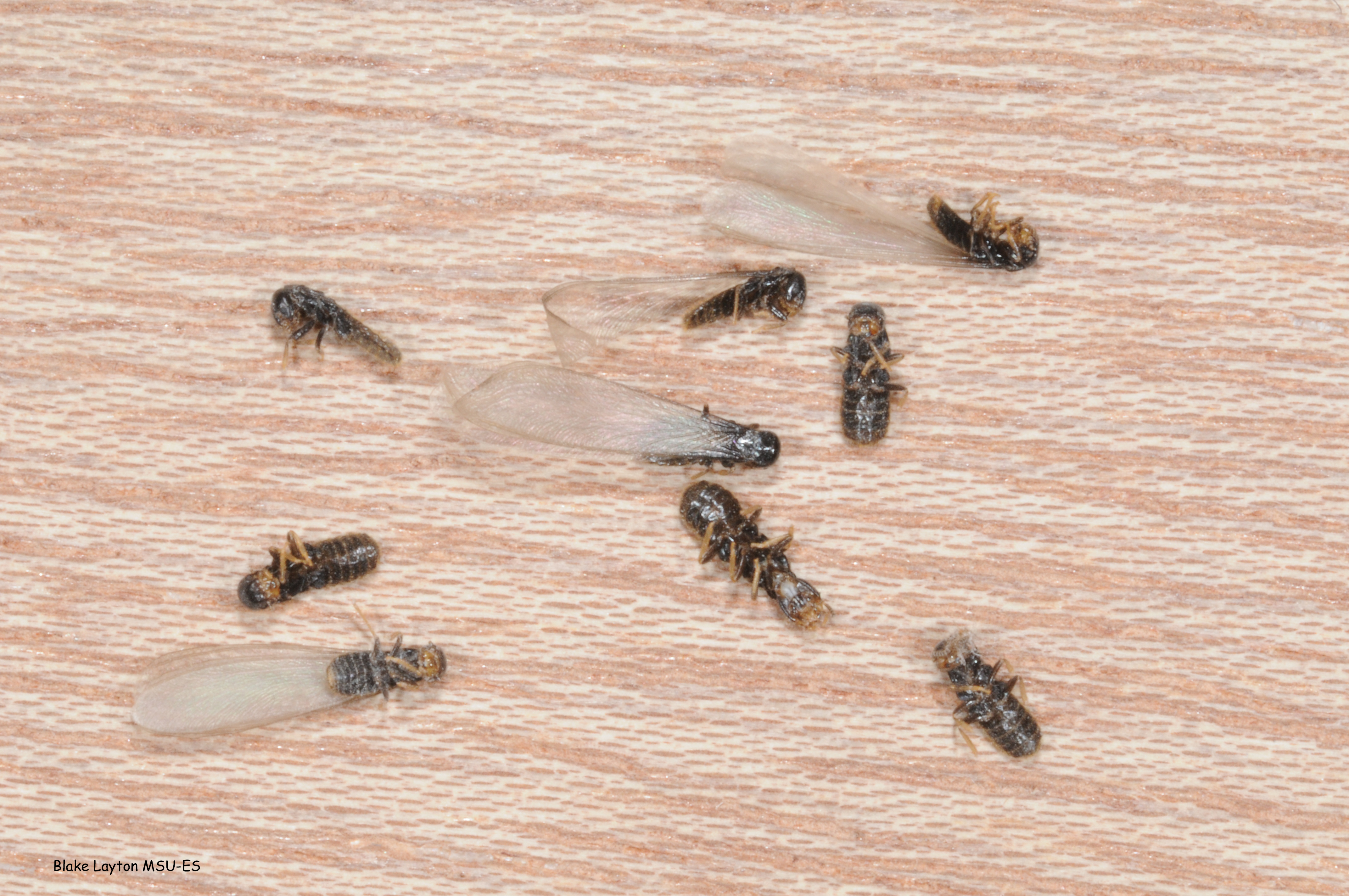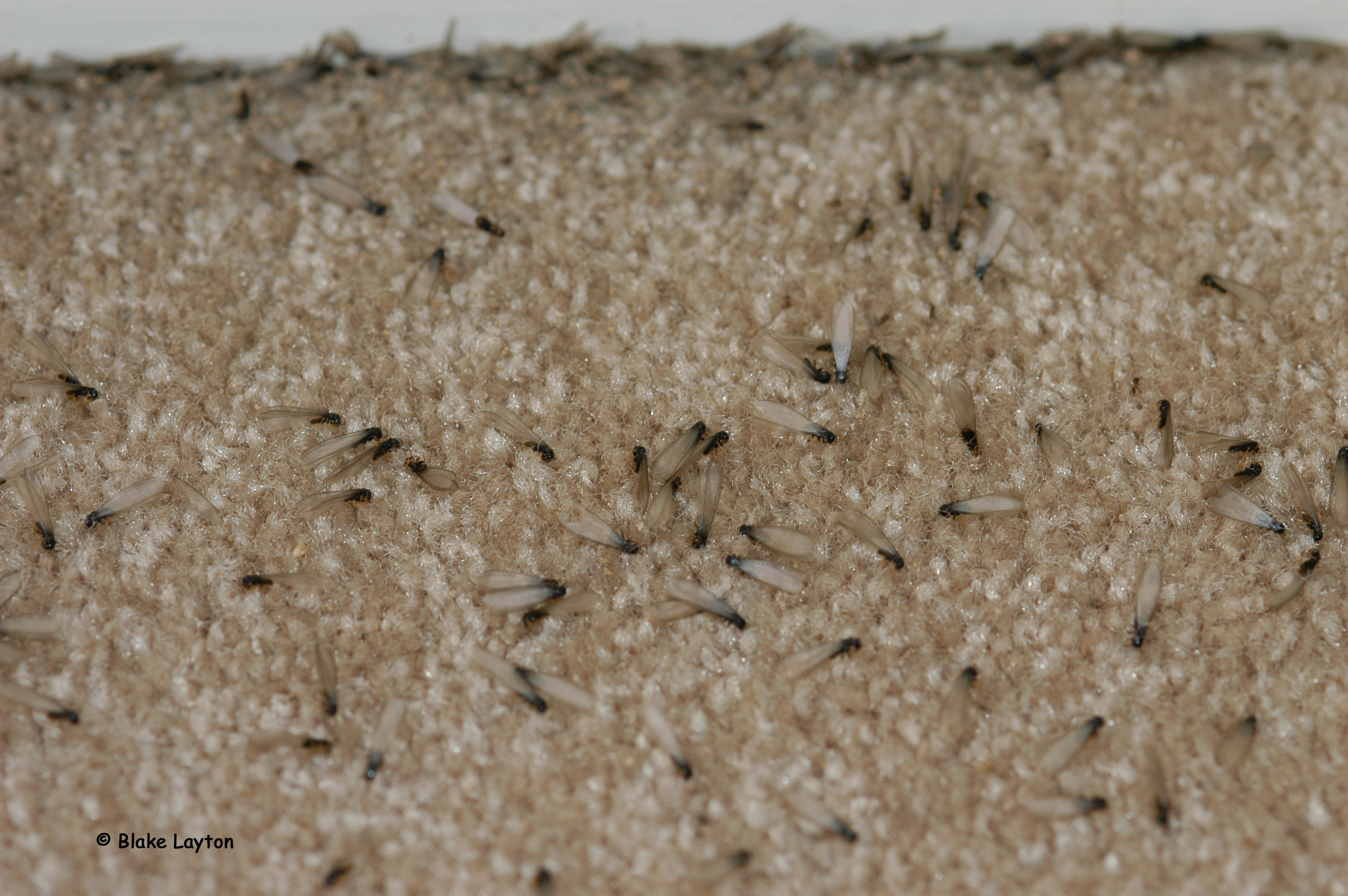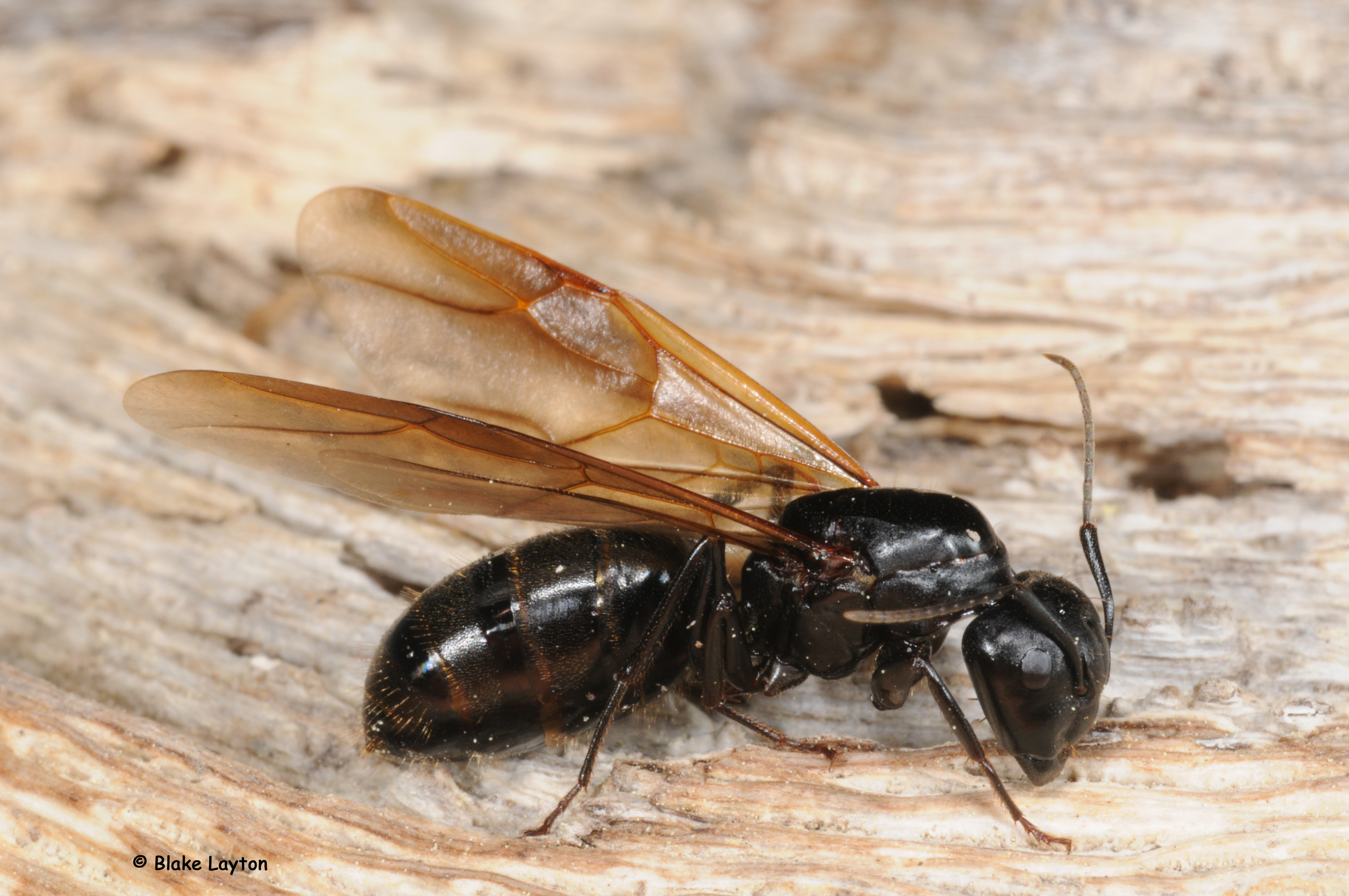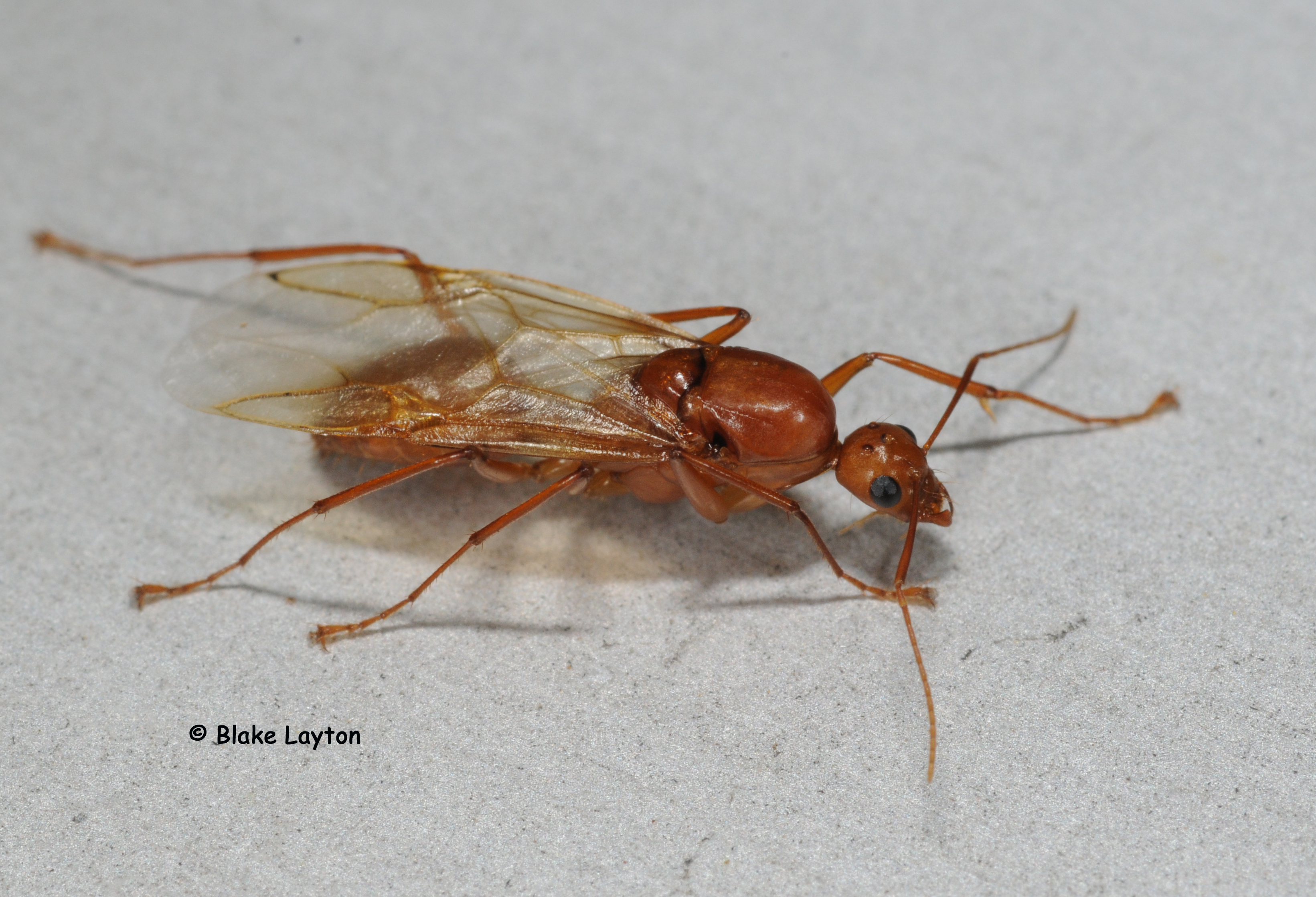Are These Termites or Ants?
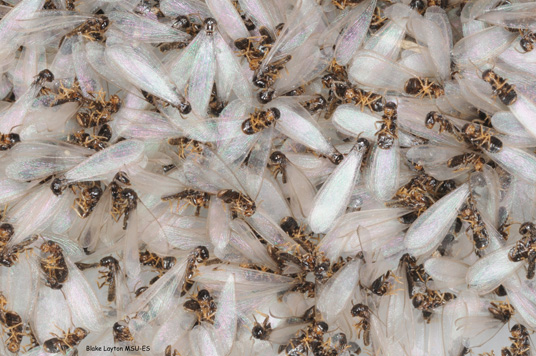
You’ve found large numbers of insects flying about the house, or perhaps you have noticed an accumulation of dead insects on the floor or on a windowsill. Are these termite swarmers or ants? This is an important question. f they are termite swarmers, it means the building is infested with termites and needs to be professionally treated. Depending on the size of the building, that’s going to cost around a thousand dollars or more. If they are ants, some type of treatment may still be needed, but you may be able to do it yourself, and even if you hire a pest control company, it won’t be nearly as costly.
So how do you distinguish termite swarmers from ant swarmers? This is really pretty easy, but it can help to have some type of magnifying glass or hand lens. This figure shows the three key characteristics to look for:
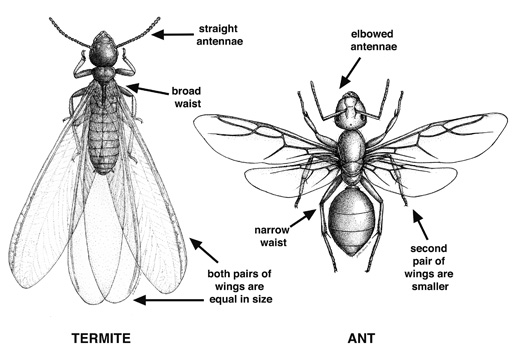
How to Distinguish Termite Swarmers from Ant Swarmers
Trait |
Termites |
Ants |
|
|
Wings |
Front wings and hind wings equal in length Wings about twice as long as body (Wings may be missing.) |
Front wings notably longer than hind wings (Wings may be missing) |
|
|
Antennae |
Antennae straight and beadlike |
Antennae have a distinct elbow or angle |
|
|
“Waist” |
No waist, abdomen broadly joined to thorax |
Narrow waist, abdomen narrowly joined to thorax |
|
|
Notes:
|
|||
Compare the following pictures of termite swarmers to those of ant swarmers.
Hover and then click on the left or right arrows to progress through the slide show.
Dr. Blake Layton, Extension Entomology Specialist
Department of Entomology, Mississippi State University
Phone: 662-325-2960
Email: blake.layton@msstate.edu

